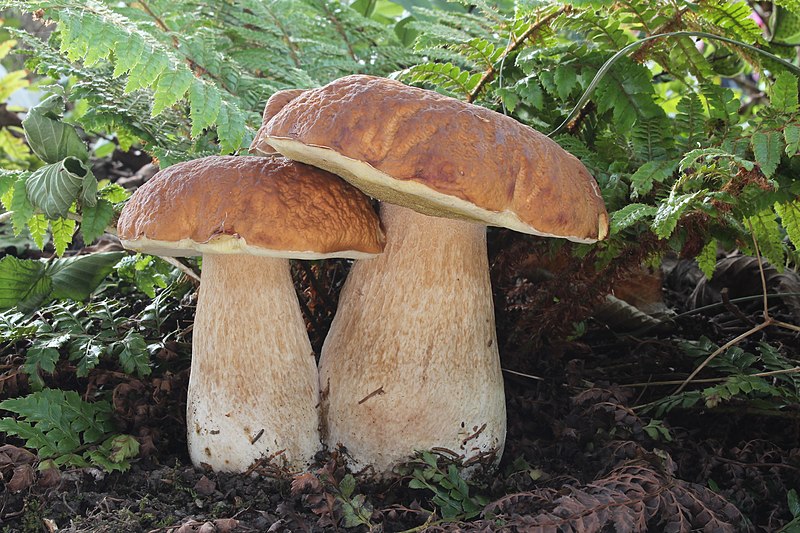King Bolete Identification – Boletus edulis
Heads up
When wandering through forests, one might come across the King Bolete, scientifically known as Boletus edulis. Recognizable by its large cap and notable appearance, this mushroom is commonly referred to as cep, penny bun, porcino, or porcini.
King Bolete: Key Parts in Photos


How to identify King Bolete
Boletus edulis is a species of basidiomycete fungus. In simple terms, it means that it’s a kind of fungus that produces spore-bearing fruit bodies, what we commonly recognize as mushrooms. It’s mainly found in Europe, Asia, and North America.
This mushroom favors deciduous and coniferous forests as well as tree plantations. It forms a symbiotic ectomycorrhizal association with living trees. This simply means that the fungus envelops the tree’s roots underground, benefitting both the tree and the fungus. When summer or autumn arrives, you can spot its fruit bodies popping up above the ground.
The King Bolete stands out with its large brown cap that can sometimes grow up to a whopping 12 inches in diameter. The cap feels slightly sticky. It starts as a convex shape, then flattens with age. Underneath this cap, instead of gills like some mushrooms, there are tubes forming pores. As the mushroom matures, spores release through these pores. Initially, these pores are whitish, but as the mushroom ages, they take on a greenish-yellow tint. The mushroom’s stipe, can be up to 10 inches tall. It’s often white or yellowish and features a raised network pattern, called “reticulations.”
Want to learn more?

Disclosure: This post includes affiliate links. If you make a purchase through these links, we may earn a commission at no extra cost to you. We appreciate your support, as it helps keep this website running. Alternatively, you can search for the book title on Amazon if you prefer not to use the links. Thank you for your understanding and support!
